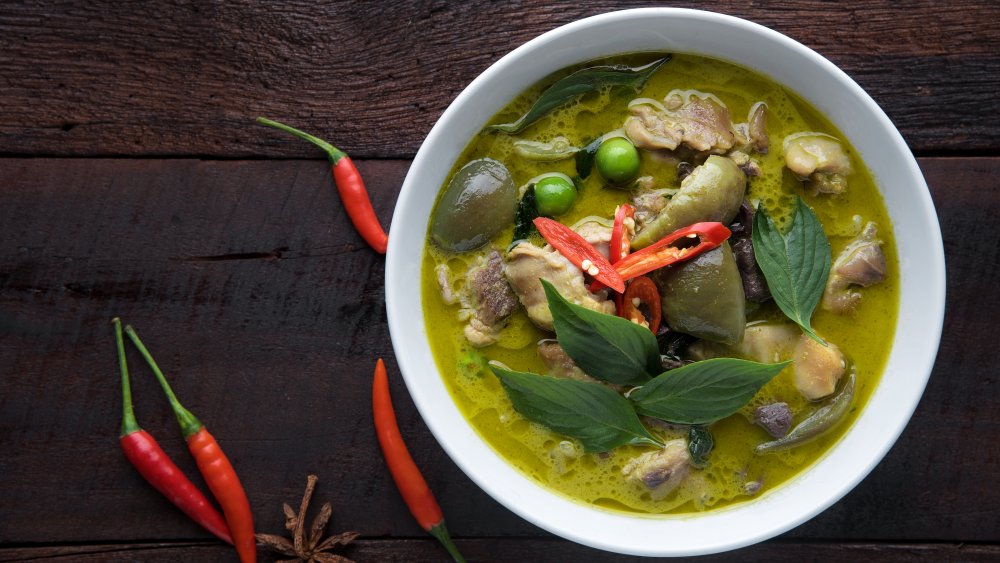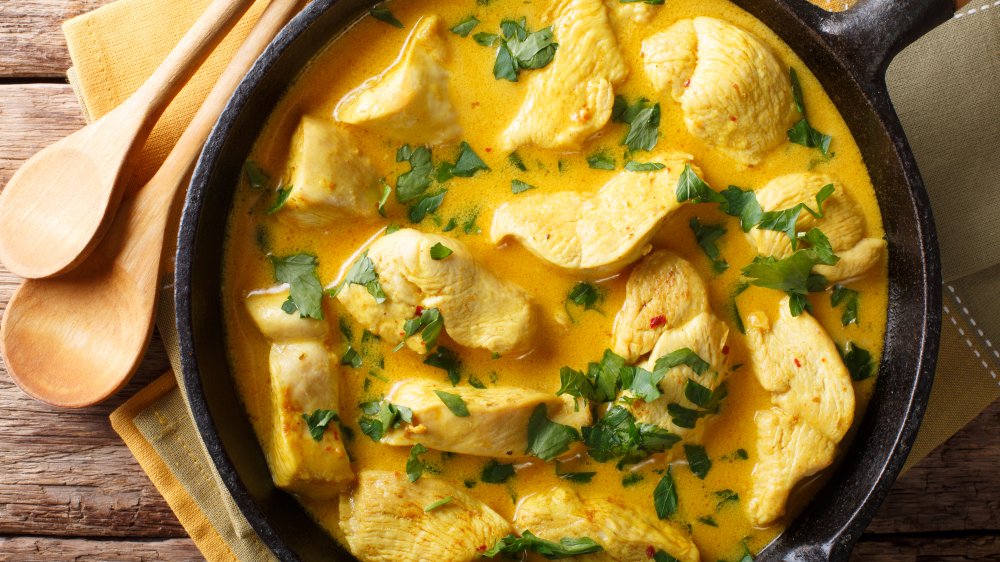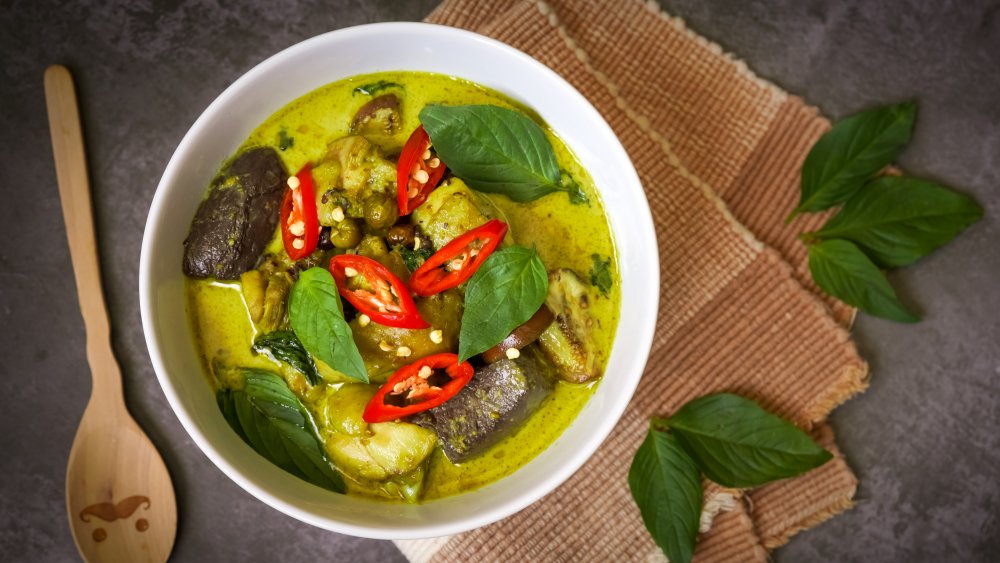Here's The Difference Between Yellow Curry And Green Curry
Curries come in such a wide variety of colors, flavors, and origins that it can be difficult to even wrap your head around what exactly curry is. A tikka masala curry and a Thai red curry have vastly different flavors — can they really fall under the same category?
According to Auguste Escoffier, food historians believe the word "curry" originated in India from "kari," meaning "sauce." The British colonizers applied this term to all kinds of sauce-based dishes the Indians made; over time, both the word and the food itself spread throughout South and Southeast Asia, creating a wide variety of spices and sauces across many distinct cuisines.
Typically, you'll see Thai curries often sold as a paste you heat up and mix with coconut milk or broth (via Bon Appetit). Usually name after their colors, red, yellow, and green tend to be the most common; whereas, many Indian curries have their own individual names, like dhansak, korma, and saag. According to The Spruce Eats, curry powder, a spice commonly thought to be Indian in origin, was actually created by the British to mimic the flavor of Indian food with a mix of different spices. Curry leaves themselves are often cooked in South Indian food (via Bon Appetit).
What is yellow curry?
According to The Spruce Eats, yellow curry and traditional Indian curries contain a similar, integral ingredient: turmeric. This gives yellow curry its golden color, and it's likely the color you most associate with Indian curries. In addition to turmeric, yellow curry contains coriander seeds, cumin, lemongrass, ginger, garlic, and yellow or red chili. Like most Thai curries, you'll likely find yellow curry in the form of a paste meant to be thinned out and served as a sauce.
Yellow curry is fairly mild in flavor with a bit of sweetness and a little spice. The Eat Clean Meal Prep blog states that it's the least spicy of Thai curries, known for the relative mellowness of its heat compared to red and green curries. Most people serve yellow curry with coconut milk, making it a creamy sauce and leveling out the spiciness even more. It is popular mixed with vegetables and chicken and served over rice or made into a seafood stew (via Averie Cooks).
What is green curry?
Thanks to its bright, bold flavors and undeniable spice, green curry is the most popular Thai curry. Originally, its green color was caused by green chilis (via Eat Clean Meal Prep); now, the green is enhanced by adding additional fresh herbs and spices such as basil, cilantro, and the leaf and peel of makrut lime (via The Guardian). Most green curries also include lemongrass, fish sauce, garlic, ginger, and shallots.
Like other Thai curries, green curry is commonly sold in stores as a paste that contains a ton of flavor. You can make all kinds of Thai food with green curry, such as green curry with chicken, beef, or fish dumplings. According to Traveling 9 to 5, green curry contains one of the most distinct Thai flavors compared to other curries, and its fresh spiciness is easily associated with Thai food. But if you're wary of a little (or a lot of) heat, be careful with this one! Green curry is the spiciest Thai curry of all.


